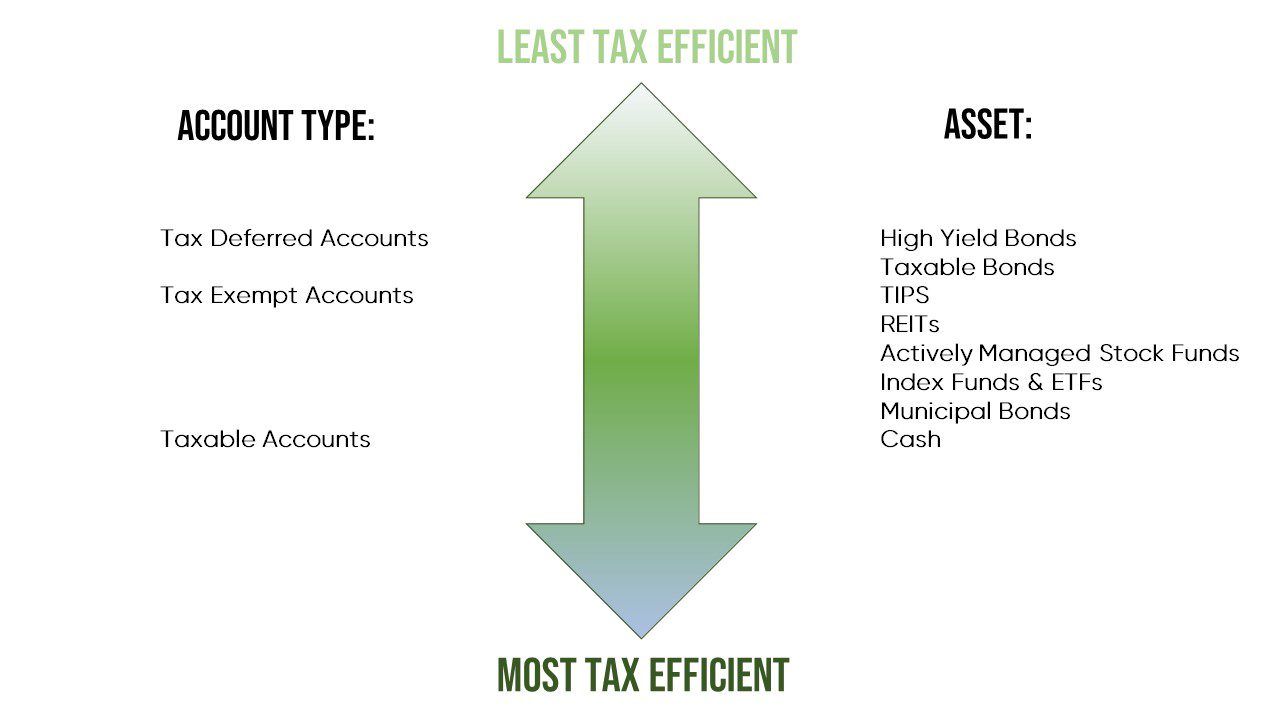Asset Location: 3 Steps for Success
Blog post
12/22/21Asset location is an important aspect of portfolio composition and one that often gets overlooked. Like many concepts in finance, it can be part art and part science. What is asset location? It is the concept of how to utilize different savings vehicles and where to place investments among those vehicles to minimize income tax. Here we will talk about 3 steps to follow for success.
1. Establish 3 Buckets to Provide a Foundation
In order to utilize asset location in portfolio management, investors should establish 3 buckets of savings (taxable, tax-deferred, and tax-exempt). Read our previous blog to understand why this is so important in building wealth. These different buckets provide the groundwork not only for sound wealth planning, but also set the stage for asset location. Having accounts with different income tax treatments allows investors to match investments accordingly to minimize tax.
2. Start bottom-up with individual positions for specific tax characteristics
Tax efficiency is a term used to describe the amount of tax burden. A business that pays less tax is more tax efficient. In the investment world, asset classes are many times categorized on a spectrum of tax efficiency (see the chart below).

While this concept can provide a good rule of thumb for investors, in many ways it oversimplifies asset location. Instead of generalizing different asset classes into buckets, a better place to begin is bottom up with each investment. Even investments of similar investment structure may have unique tax characteristics. By identifying those specific characteristics, it allows investors to prioritize those investments into their appropriate bucket. Here are some examples:
-Municipal bonds into a taxable account because the interest paid is tax-exempt at the federal level and state level (if the bond is issued in your home state).
-Bond funds that distribute ordinary income into a tax-deferred account. This income is a significant percentage of the return, paid out on an on-going basis, and is subject to ordinary income tax rates.
-Tax deferred income/distributions in taxable accounts for high earners. For example, MLPs (Master Limited Partnerships) distribute income that is considered a return of capital and is not taxable when paid.
-Mutual funds that have a lot of trading activity or transact in the futures markets into a tax-deferred account because of high year-end fund distributions.
3. Balance Volatility and Expected Return
While many investments fit into a specific bucket given their unique tax characteristics, others are not as clear cut. And because of these uncertainties, it can be beneficial to diversify among these dynamics.
Taxable accounts can be a tool to utilize in asset location. The benefit is that taxable accounts lower after-tax risk. This is the case because investors can write off capital losses on their taxes. By having volatile positions in these accounts, this gives investors the opportunity to actively manage and reduce their tax liability on an annual basis. Investors also can gift these positions to charity or pass them to their heirs and avoid paying taxes all together.
On the other hand, taxable accounts reduce return (after tax return = return * (1 – tax rate)). Therefore, to maximize after-tax portfolio value it would be ideal to have the highest returning investments outside of taxable accounts and in a tax-exempt account. We agree there can be merit in strategically putting your best ideas or highest expected return assets in tax advantaged accounts, but this is difficult in practice because no one can predict future returns. Instead balancing between volatility and expected return across buckets can provide investors optionality and reduce risk.
Asset location is an important concept for everyone’s portfolio. It is never too early or too late to apply this concept to your portfolio. Contact us if you have any questions about asset location or anything wealth management related.